Freer than free when it comes to the avant-garde music of friction and fracture, yet equally comprised of lyrical, ruminative, hope-filled beauty and spiritualized serenity, pianist, composer and improviser Satoko Fujii is magic — in performance settings both intimate and epic — and has held such thaumaturgy as her stock-in-trade since her 1995 recorded debut, Something About Water (Libra).
Recording and touring usually with her husband, the magnetic trumpeter Natsuki Tamura, Fujii has unveiled her sumptuous conjurations, touched by elements of traditional Japanese folk and ornate classicism, in serious-sounding ensembles such as Junk Box, the Min-Yoh Ensemble and her Double Duo.
In 2025, however, the pianist and composer welcomed a new element into the music — humor. “I know I am a little too serious sometimes,” she says after our interview. “Natsuki sometimes tells me, ‘Satoko, it is a joke!’ Next time [we speak], we can make jokes, as many as possible.”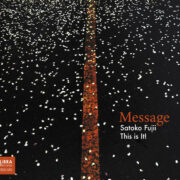 In addition to Message with Tamura and percussionist Takashi Itani (a unit called This Is It!), Altitude 1100 Meters with her string ensemble GEN, and her Tokyo Trio album Dream a Dream, there are strains of quirky humor, complex silliness and outlandish jocularity to be heard during Shishiodoshi, her July release with her longtime improvisational collective Kaze. Sometimes being free means being free to laugh out loud.
In addition to Message with Tamura and percussionist Takashi Itani (a unit called This Is It!), Altitude 1100 Meters with her string ensemble GEN, and her Tokyo Trio album Dream a Dream, there are strains of quirky humor, complex silliness and outlandish jocularity to be heard during Shishiodoshi, her July release with her longtime improvisational collective Kaze. Sometimes being free means being free to laugh out loud.
I spoke with Fujii about her body of work, her current albums and the complicated relationship she holds dear with the longtime membership of Kaze.
It’s 30 years since your first album, Something About Water, the piano duo with Paul Bley. Is there anything from that particular recording that you recognize in the Satoko Fujii of 2025: similar feelings toward improvisation and free music? The dynamics of your skill sets as a composer and as a pianist? A devotion to the absurd? Anything? If so, how so?
I sometimes listen to my old recordings, and when I do, I always notice that I was very much myself right from the beginning. I am more comfortable now playing music than back then. I’ve gained more confidence about what I express. But basically, “Satoko Fujii” has been there all the time.
What do you recall about choosing piano in the first place? Or did it choose you?
I started playing piano when I was just four years old. Many of my friends picked their musical instruments when they became teenagers. By that time, they had particular tastes and leanings that contributed to those choices. Piano was part of me for my whole life, so I wasn’t always sure if I really wanted to play it or not. Because of that, I once tried to quit. For almost two years when I was 20 years old, I abandoned the instrument. Then I went to a jazz club in Tokyo to see Fumio Itabashi, and I realized that I really do love to play the piano. Itabashi’s playing reminded me of how much I love to play. I actually asked him if I could study with him, and I did for a few years before I went to Berklee.
As magnetic a solo artist as you are, you have been working in duo and ensemble settings with your husband, trumpeter Natsuki Tamura, since 1997. Is there a set of criteria that you believe only you and he hold for each other: specific goals toward each session or recording?
We set goals for each project. For example, our latest album Aloft (2023) showcases quiet improvisation that we use to express a deep imaginary landscape. We played composed pieces for Keshin (2020), which I wrote for the most part. We plan to record our new project next week, which will feature new pieces composed by Natsuki reflecting the concept of space, and how much more revealing it can be than actual sound.
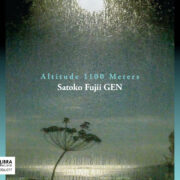 Can you tell me a little bit about your inner life when working on the projects you’ve released this year?
Can you tell me a little bit about your inner life when working on the projects you’ve released this year?
I love composing and playing. It’s so much fun, and brings me a lot of joy. I’ve released many albums in many different formats, but they’re just a result of my work, which is my life. I don’t like vacations. For me, the most relaxing and enjoyable thing I can do is make music. When I compose or practice or play, I always get inspiration for the next project. In my brain, all my different projects connect each other, and it’s much easier for me to do lots of different things at the same time. It makes me happy.
With the Tokyo Trio and with Wadada Leo Smith, these were two rare opportunities where you didn’t play with Tamura. Is that an odd feeling for you?
Natsuki has some projects that don’t include me and vice versa. When I don’t hear Natsuki’s trumpet sound in my compositions, he’s not in the band. We both have very strong voices, so including him gives a project a certain sound and style. Our current life situation also affects how much we can work together. We need to take care of my elderly parents, ages 98 and 92. My sister tries to be there most of the year, but Natsuki and I have to be available to help four months a year. When Natsuki has projects I stay with them, and when I have projects, he stays.
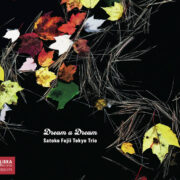 What were your motivating factors behind forming Kaze? And how have those initial motivating factors and principles morphed or changed?
What were your motivating factors behind forming Kaze? And how have those initial motivating factors and principles morphed or changed?
I got an offer to participate in the Chopin 200th anniversary in Poland in 2010. At first I was planning to bring one of Natsuki’s Japanese improvised units with me, but one of our bandmates got seriously ill. A while before that in 2002, my quartet played a double bill with Peter Orins’s band, and his compositions really impressed me, so making music with him was always on my wish list. The Chopin 200th anniversary seemed like a good opportunity, so I emailed Peter about it. He got the idea for a quartet with two trumpets.
Before that, I didn’t know anything about Christian. So the director of Kaze is Peter Orins, but we all compose for the band and it’s very democratic. We don’t talk about music, but we talk with music.
In the anime/manga “brawler” universe, Kaze is an assassin and shishiodoshi is a thing designed to frighten away animals — is there anything particularly murderous and scary that Kaze is responsible for?
Kaze means “wind” in Japanese. I didn’t even know about the manga connection. Natsuki named the band because we have two wind instruments, and we wanted to sound like the wind, which you can’t see but you can feel. “Shishiodishi” is something we see in Japanese gardens that makes a very fascinating sound [to repel wildlife]. For us Japanese, it’s a sound we enjoy amid the quiet of the garden. We have shishiodoshi in Japanese gardens even in Tokyo, where there are no wild animals.
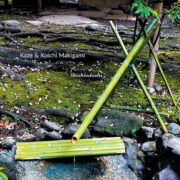 Something seems to occur on Message and Shishiodoshi: There is humor as part of the music’s raw power. What do these players and singers bring out in you for such giddiness to fill the music?
Something seems to occur on Message and Shishiodoshi: There is humor as part of the music’s raw power. What do these players and singers bring out in you for such giddiness to fill the music?
Some musicians, like Natsuki, Takashi Itani and Koichi Makigami, possess a deep sense of humor that I don’t. I like having their sense of humor around. It’s not silly, it’s enjoyable and intelligent. Humans need to have humor in the world to keep it peaceful.
I know Makigami’s work as a poet and from making angularly askew free rock records. I know you dabbled in avant-garde rock back in 2001 on Vulture. Is there any similarity in the feeling you have toward each of these sessions, the need to “rock out” some 24 years apart from each other?
I like playing with musicians who create their own languages. It doesn’t matter how they’re characterized. Any genre is OK with me, not just jazz and rock. If I hear something interesting, if I hear shared musical values, that’s what interests me.
Improvisation means never knowing what’s coming. When Makigami began speaking in tongues and growling on “Make a Change,” then changing direction and tempo, what ran through your mind? And how does his taking a lead in that regard work with Kaze’s collective mentality?
I believe that when we improvise, anything can be a musical instrument. I like that kind of freedom. Koichi is very free and has enough confidence to change directions within a piece. Change can happen at any point; it doesn’t need to be organic all the time. I actually love this kind of unexpected change because it can make the music more interesting. I like surprises from collaborators. Kaze is free and flexible enough to accept Koichi’s crazy improvisations.
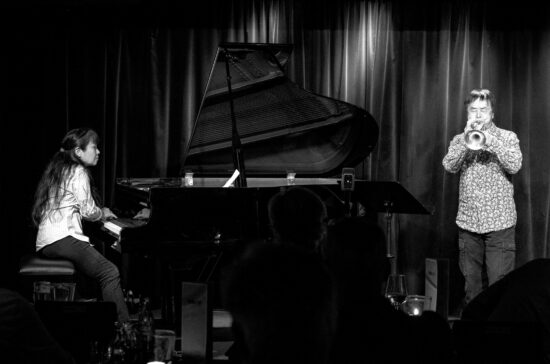
Tamura’s “Inspiration 2” has real moments of quiet, with Kaze imitating the many different sounds of nature and you ripping through a particularly incendiary piano solo. What can you tell me about all of this? It sounds in equal measure serenely spiritual, maddening, frustrated, goofy?
“Inspiration 2″ is Natsuki’s. He wrote the structure, without any fixed notes, and he cues when to play. We start with someone’s solo that Natsuki points out, then on his next cue we all imitate the solo player. Then he points to the next soloist, then we all imitate the solo and so on. There is a simple written ending that we play on Natsuki’s cue. So I would say it is a kind of composed improvisation. We didn’t think about nature while we were playing, but it ended up sounding like nature.
Thinking back to your first album 30 years ago, what is jazz now for you that it wasn’t in 1995? Less innocent, more reflective of society, the vagaries of your personality?
Basically, I have the same feelings about jazz as when I started listening to it 50 years ago. Jazz is music that’s alive, with total freedom. If I don’t hear the free spirit and I don’t feel life in it, I don’t call it jazz.
There is one thing that is different now, though. Thirty years ago I wasn’t comfortable saying I played jazz, because there were always people asking if my music was jazz, and sometimes complaining that it wasn’t. Now I’m comfortable saying I’m a jazz musician, maybe because of the experience, confidence and perspective I’ve gained with age. JT
